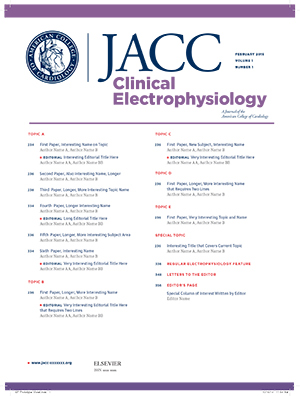In patient with heart failure (HF), uptitration of drugs guided by biomarker levels may have resulted in fewer deaths or hospitalizations in a randomized clinical trial, compared with a hypothetical scenario in which all patients were successfully uptitrated. The study, which examined angiotensin-converting enzyme (ACE) inhibitor/angiotensin receptor blockers (ARBs), beta-blockers and mineralocorticoid receptor antagonists (MRAs), was published in the Journal of the American College of Cardiology.
Primary patient outcome in BIOSTAT-CHF was the first occurrence of all-cause mortality or HF-related hospitalization. Survival time was calculated from date of inclusion in BIOSTAT-CHF to date of death/HF hospitalization or date of censoring. The study authors compared clinical outcomes between three theoretical treatment scenarios: A) all patients uptitrated to >50 percent of recommended doses; B) patients uptitrated using a biomarker-based treatment selection model; and C) no patient uptitrated to >50 percent of recommended doses. Only patients who were followed for three months or less were included in the present analysis. A multivariable Cox regression was performed using 161 biomarkers and their interaction with treatment, weighted for treatment-indication bias to estimate the expected number of deaths and/or HF hospitalizations at 24 months for all three scenarios.
In 1,802 patients with available biomarkers, the rates of estimated death/hospitalization with ACE inhibitor/ARB were 16 percent, 16 percent and 26 percent, respectively, for the uptitration scenarios A, B and C. Patients not benefitting from ACE inhibitor/ARB uptitration were younger, more frequently smokers, with less atrial fibrillation; they had higher hemoglobin and blood urea nitrogen (BUN) levels, but lower heart rate and NT-proBNP levels.
For the beta-blocker uptitration, the rates of estimated death/hospitalization were 23 percent, 19 percent and 24 percent for scenarios A, B and C. For MRA uptitration, these rates were 12 percent, 11 percent and 24 percent, respectively.
Patients not benefitting from beta-blocker uptitration were older, leaner, and more frequently smokers or former smokers. They had less ischemic HF, but more myocardial infarctions and other comorbidities. And they had significantly higher LVEF, NT-proBNP, BUN and creatinine levels, and lower diastolic blood pressure, heart rate, hemoglobin and estimated glomerular filtration rate.
If uptitration was successful in all patients using the scenarios, the estimated number of events per 100-treated patients that could be prevented at 24 months was 9.8 with ACE inhibitor/ARB treatment, 1.3 with beta-blocker and 12.3 with MRA treatment. Biomarker-guided uptitration provided similar results. The estimated number of events per 100-treated patients that could be prevented at 24 months was 9.9 with ACE inhibitor/ARB, 4.7 with beta-blocker, and 13.1 with MRA.
The authors estimate that one in 50, one in three and one in eight patients would not benefit from ACE inhibitor/ARB, beta-blocker or MRA uptitration, but that their mortality/hospitalization hazards would not increase much due to uptitration.
“Because of the nature of this study, and the small differences between biomarker-based treatment choice and the scenario in which all patients would have been successfully uptitrated, we suggest that uptitration should always be attempted in heart failure patients, which should lead to improved treatment of life-saving therapies across Europe,” they conclude.
Ouwerkerk W, Zwinderman AH, Ng LL, et al. J Am Coll Cardiol 2018;71:386-98.
<<< Return to top



